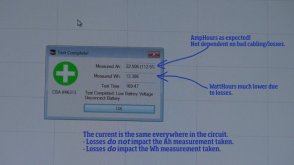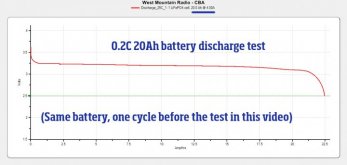I think when EVE says 0.05C as suitable for termination amps, I have my doubts that is correct. Translation being as lax as it is.
I know the beck power supply is set to 3.65V now when it's reaching 15A it is at 3.65 and stays there till amps drop to <2.0A.
People have bought 10A capable bench supplies not realizing that at 10A full bore you are talking a LOT of hours to charge a 280 from 2.50V.
I start at close to 40A which quickly dwindles down to 30A and stays there until the cells actually reach 3.330 then the amps slowly fall till we reach 3.500 by which time it's at 25A. The moment the cell voltage hits 3.65, the amps taken slowly decreases till it appears to stall at 2.0A but at that point it''s is trickling in and saturating. By 1.0A your quite topped & saturated.
A GOTCHA !
Bench supplies are tricky beasts.... You can set the voltage to 3.600 and start charging. The cell will still say 2.75V or whatever and climb as it gains charge. BUT setting the TOP must be done carefully with an Eagle Eye ! By the time the amperage has started to drop near the top, you have to keep an eye on the voltage limit, often that needs to be "tweaked" to stay within 3.600-3.650, if not, you could end up topping to 3.70 or even 4.00V.
Case in point, I am charging a cell right now... started at 2.60V after a capacity test.
Cell terminal says 3.360V. Charger terminal says 3.560 and pushing 25.4A
As Cell Volts go up, the Amps going out drop.
As the cell reaches 3.65, the amperage will drop while the Volts at the Charger terminals will also hit 3.650. At this stage we are roughly at 15A being taken, which then falls steadily to close to 2.0A at which point it really slows into a trickle for saturation.
A side note: I finished one cell off to 3.650V with 1.5A charge being accepted last night. It settled to 3.6303V in an hour. It has sat for 12 hours now and has only settled to 3.5584V. Had I done like my previous test of cutting off charge at 10A, it would have settled even lower, closer to 3.4500 ish. That's why I had to do my capacity tests twice, because I failed to saturate.




